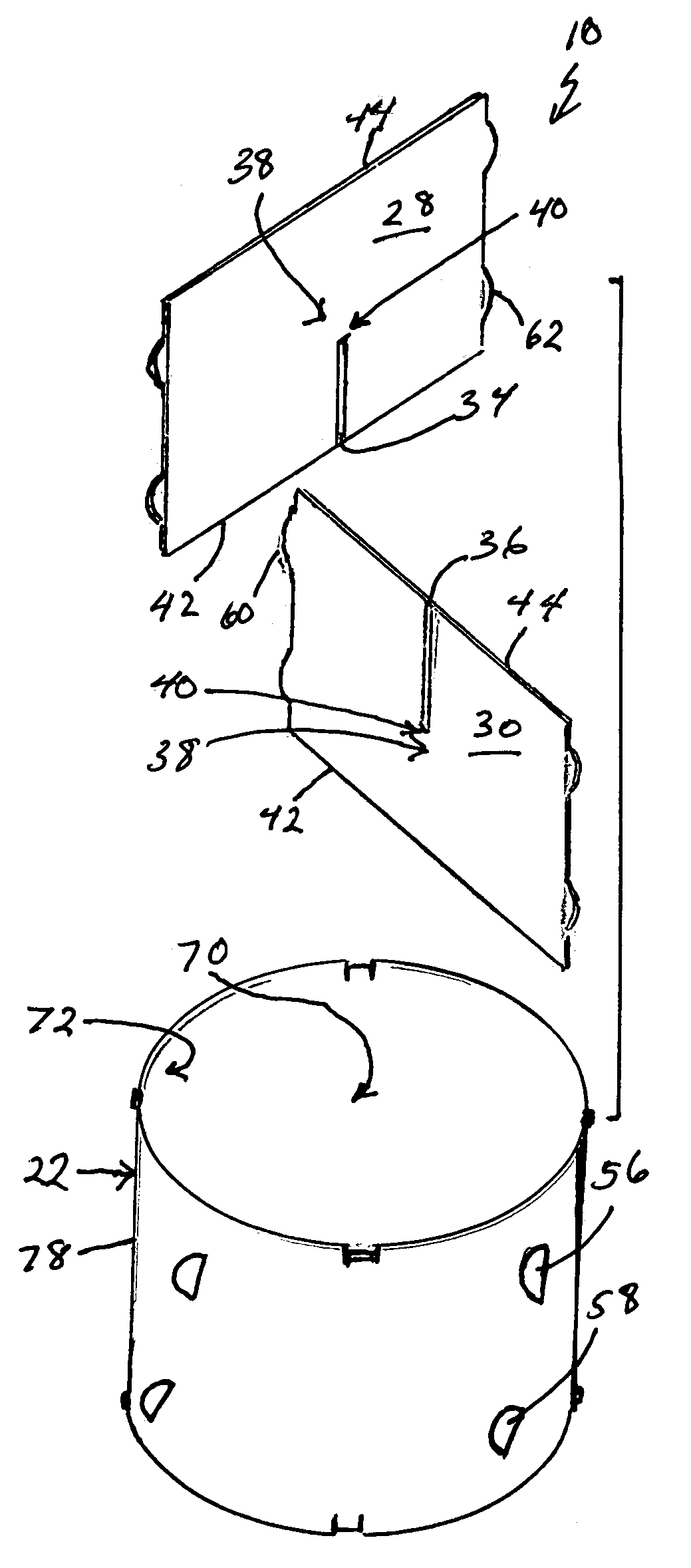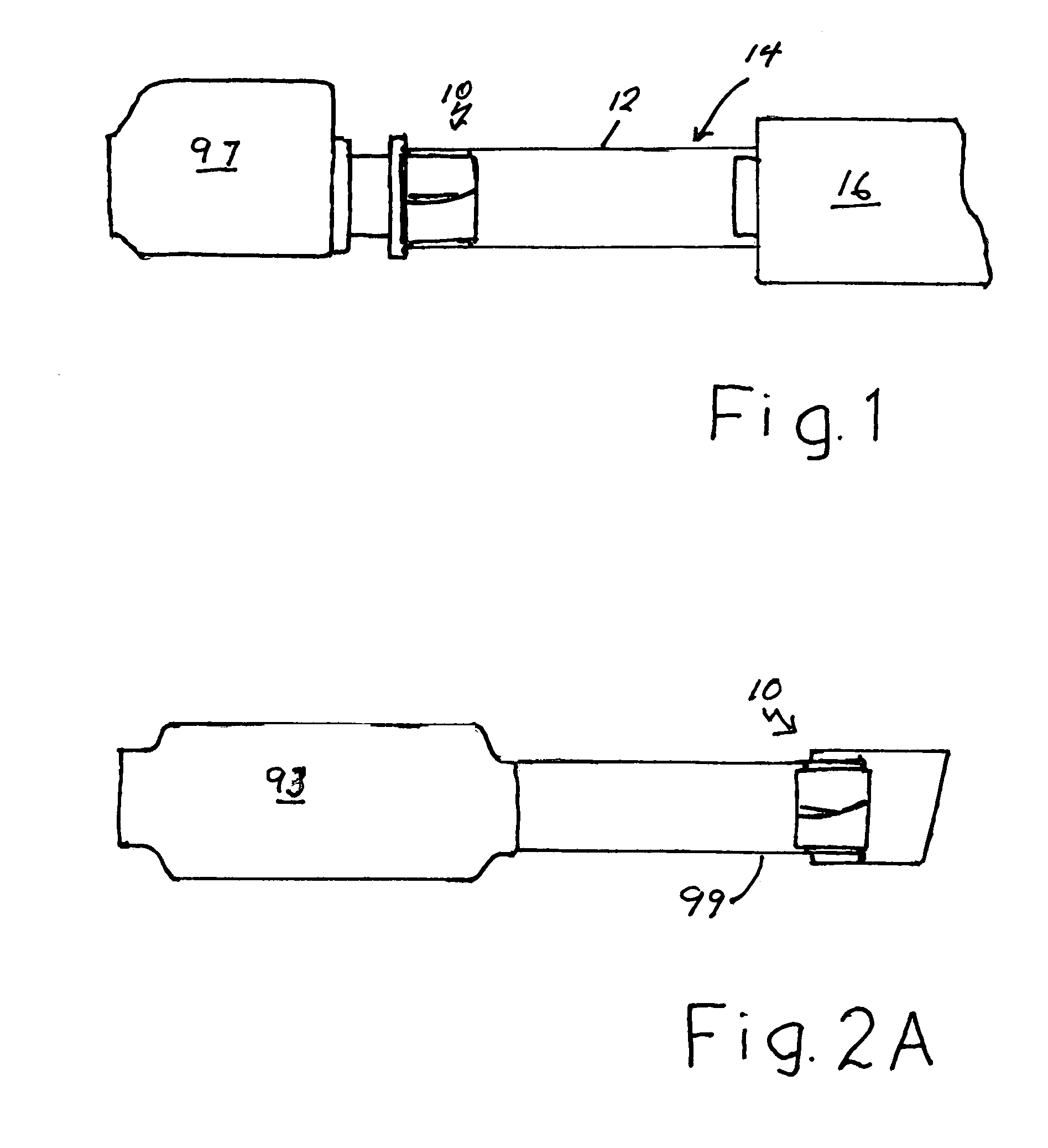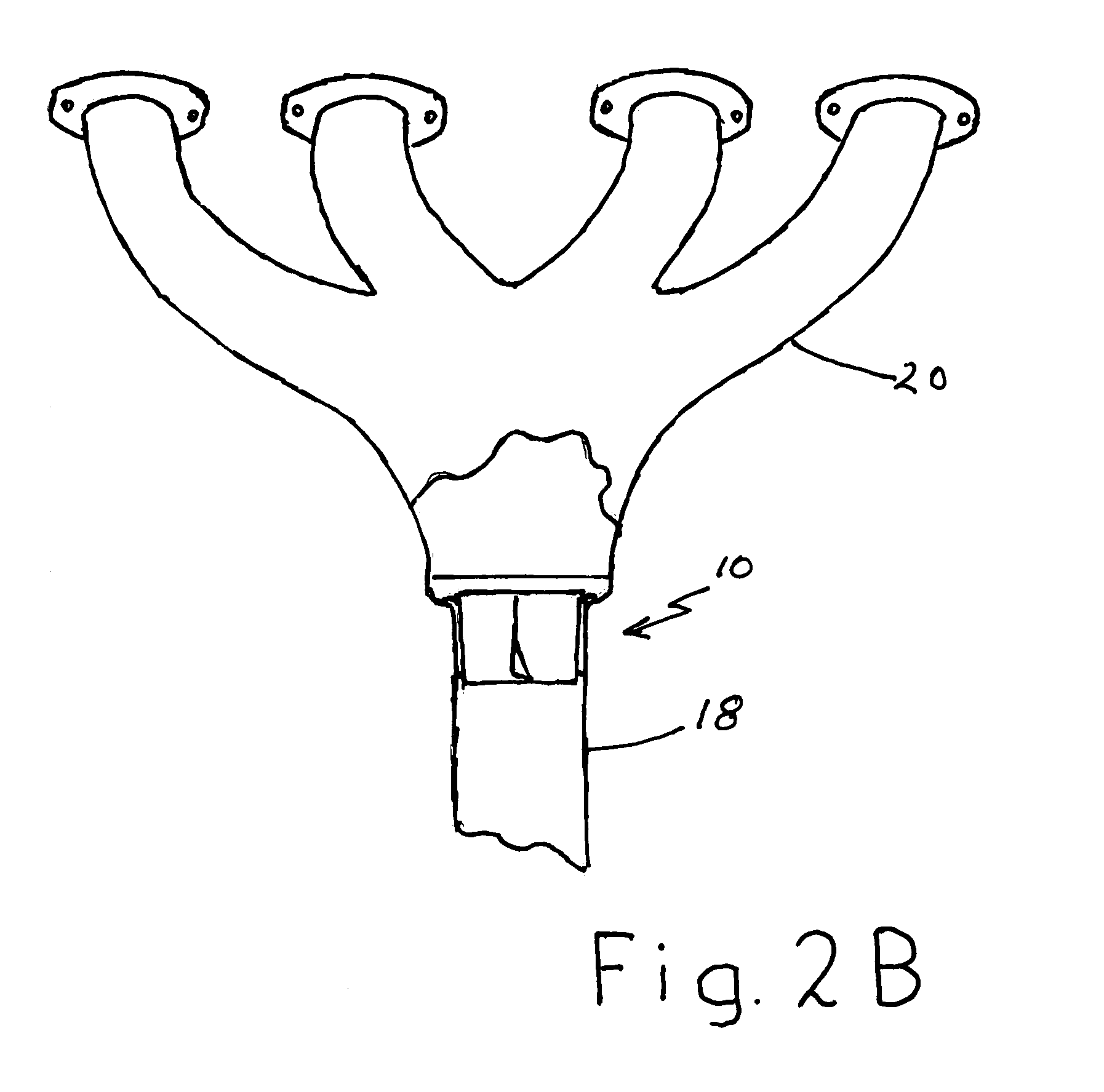Fluid swirling device
a technology of swirling device and fluid, which is applied in the direction of exhaust treatment, engine components, mechanical apparatus, etc., can solve the problems of reducing the combustion efficiency of the engine, hindering the complete combustion of fluid, and not readily atomizing, so as to achieve the swirl effect efficiently, improve the airflow, and reduce the effect of forces acting
- Summary
- Abstract
- Description
- Claims
- Application Information
AI Technical Summary
Benefits of technology
Problems solved by technology
Method used
Image
Examples
Embodiment Construction
[0042]Referring to the drawings, the swirling device of the present invention is generally designated by the numeral 10. The device 10 is sized to fit inside an intake passageway or duct 12 of an intake subsystem 14 of an internal combustion engine (not shown). The passageway 12 leads to a fuel introduction subsystem 16 which may be a fuel injection subsystem, as shown, or a carburetor. The passageway is thus used for delivery of intake air to the fuel injection subsystem 16 from the air filter box 97.
[0043]FIG. 2A shows the device 10 mounted in an exhaust passageway or pipe 99. The tailpipe 99 is attached to a catalytic converter 93 which receives the exhaust gases from the muffler (not shown) and from the engine (not shown). The device provides a swirl to the exhaust gases resulting in a vortex shaped flow stream thereby drawing out the exhaust gases from the exhaust system.
[0044]FIG. 2B shows the device 10 mounted in another type of exhaust passageway or pipe 18. The exhaust pipe...
PUM
 Login to View More
Login to View More Abstract
Description
Claims
Application Information
 Login to View More
Login to View More - R&D
- Intellectual Property
- Life Sciences
- Materials
- Tech Scout
- Unparalleled Data Quality
- Higher Quality Content
- 60% Fewer Hallucinations
Browse by: Latest US Patents, China's latest patents, Technical Efficacy Thesaurus, Application Domain, Technology Topic, Popular Technical Reports.
© 2025 PatSnap. All rights reserved.Legal|Privacy policy|Modern Slavery Act Transparency Statement|Sitemap|About US| Contact US: help@patsnap.com



